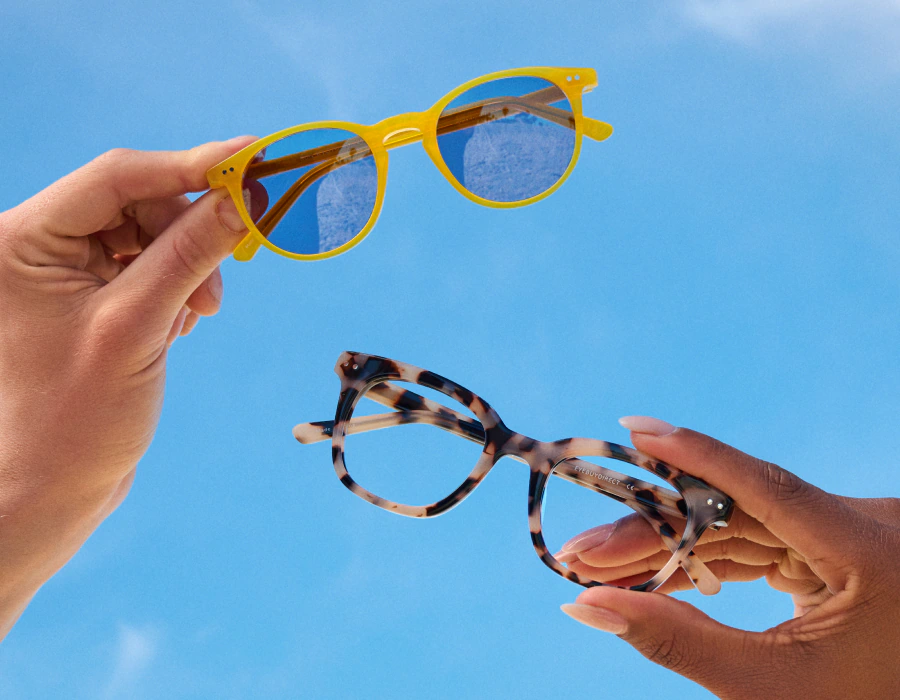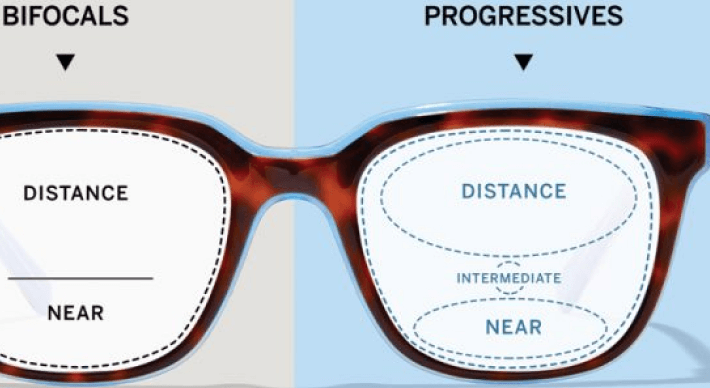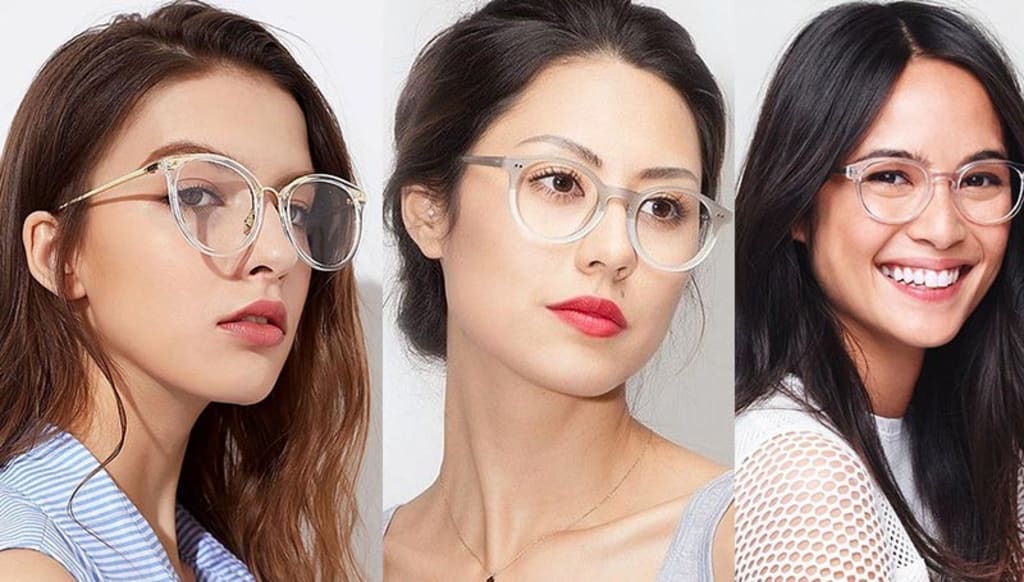The most useful accessory you own is a pair of eyeglasses. They help you see better, work better, and drive safely.
They also serve as fashion accessories, enhancing your appearance with a chic touch.
Thus, eyeglasses have been a remarkable invention that has not only corrected vision impairments but also evolved into fashionable accessories and technological marvels.
From their humble beginnings as simple magnifying glasses to the vast array of options available today, eyeglasses have come a long way in addressing vision needs and personal preferences.
Although they are still regarded as classics, generic black-rimmed, one-size-fits-all throwaways are no longer the standard in eyewear.
Selecting the ideal pair of glasses can be overwhelming due to the various styles, lenses, and prescription options available.
Eyeglasses have a rich history that dates back to ancient times. The earliest evidence of magnification tools used to enhance vision can be traced to ancient Rome and China.
These early prototypes evolved over centuries, leading to the creation of eyeglasses as we know them today.
Different eyeglasses are available in styles and functionalities, catering to vision correction and fashion preferences.
Different Types of Eyeglasses
Here are some common types:
1. Single Vision Glasses

These are the most basic and widely used eyeglasses. They correct a single vision problem, such as nearsightedness (myopia) or farsightedness (hyperopia).
They are a fundamental optical solution designed to address a specific vision issue.
Nearsighted individuals have trouble seeing distant objects clearly because light focuses in front of the retina rather than on it.
Single-vision glasses for myopia correct this by adjusting the focal point of light onto the retina, allowing distant objects to be seen more clearly.
Conversely, farsighted individuals struggle with close-up tasks, as light is focused behind the retina.
Single-vision glasses for hyperopia shift the focal point forward, aiding in close-up vision tasks such as reading or using a computer.
Moreover, single-vision glasses can also be prescribed for those with astigmatism, where the cornea is more gular, causing blurred vision.
The lens in these glasses is crafted to correct this irregularity and enhance visual clarity.
Advancements in lens materials and coatings have significantly improved single-vision glasses.
Modern options include high-index lenses, which are thin and lighter, providing better aesthetics and comfort.
Additionally, anti-reflective coatings reduce glare and improve night vision, while UV protection coatings shield the eyes from harmful rays.
With ongoing technological advancements, these glasses enhance the quality of life for many by providing more precise, more comfortable vision.
2. Bifocal Glasses

Bifocal glasses have two distinct sections in the lenses, usually with the top for distance vision and the bottom for close-up tasks like reading.
These lenses represent a significant achievement in optometry in meeting the vision demands of people with nearsightedness (myopia) or farsightedness (hyperopia) and presbyopia.
An age-related disorder called presbyopia causes the eye’s lens to become less flexible.
Bifocals enable wearers to see well at different distances since they have two other prescriptions in one lens.
They are commonly used by individuals who need both distance and reading correction.
Benjamin Franklin initially invented it in the 18th century. This innovative design enables individuals to transition seamlessly between tasks, like reading and driving, without constantly switching between glasses.
Modern bifocals also benefit from advancements in lens materials and coatings, such as anti-reflective coatings to reduce glare and UV protection coatings to safeguard the eyes from harmful ultraviolet rays.
These eyeglasses have significantly improved the quality of life for individuals with multiple vision needs by integrating two prescriptions into a single lens.
3. Reading Glasses

Reading glasses are also one of the different types of eyeglasses. They are designed specifically for reading or close-up tasks.
They are available without a prescription and are commonly used by individuals with presbyopia.
They are designed to compensate for this loss of concentration in presbyopia, allowing individuals to comfortably engage in reading, using digital devices, or performing other close-up tasks.
Optometrists determine the prescription of these glasses based on an individual’s needs, often a positive power in diopters.
This positive power helps bring close-up objects into sharper focus, alleviating eye strain and allowing for a more relaxed reading experience.
Reading glasses are available in various styles and designs, catering to different preferences and lifestyles.
They can be full-frame, half-frame (or half-rimless), or rimless, each distinctive aesthetic.
To ensure comfort and longevity, the frames are made from various materials, such as plastic, metal, or a mix of the two.
Moreover, they come in multiple colors and patterns, allowing wearers to express their style.
One significant advantage of reading glasses is their accessibility and affordability.
They can be purchased over the counter in many retail stores, doctor’s stores, or online, making them convenient for individuals.
Additionally, reading glasses can be portable and easy to carry, fitting into pockets or small cases, enabling wearers to have them on hand whenever needed.
Individual must undergo regular eye examinations to determine the appropriate prescription for their glasses.
This ensures that the glasses provide the most accurate correction for their specific vision needs, resulting in a comfortable and practical aid for close-up tasks.
4. Progressive Eyeglasses

Unlike bifocals, this type of eyeglass assists in correcting all focal points without apparent lines.
Smoother vision is made possible by how each area switches from one visual correction to another.
Presbyopia is the necessity for progressive lenses after the age of 40.
The gradual power shift of these progressive lenses makes it easier to switch the focus from distant to near and vice versa.
Additionally, these progressive lenses lessen the possibility of image jump, a frequent occurrence with other lenses designed for individuals over 40.
The intermediate prescription, which corrects objects up to arm’s length away, is achieved by progressively increasing the power of the top of the lens, designed for distant vision.
Finally, its power increases towards the bottom, making it ideal for “close-up” tasks like reading, using a smartphone, or examining a price tag.
5. Computer Glasses

Among the different types of eyeglasses, these glasses are optimized for viewing digital screens.
They reduce blue light exposure and minimize eye strain associated with extended computer use.
Computer glasses are specialized eyewear designed to lessen the adverse effects of prolonged screen exposure from electronic devices, such as computers, tablets, and smartphones.
They are sometimes referred to as blue light glasses or computer eyewear.
The primary feature of computer glasses is the blue light filtering technology incorporated into the lenses.
Digital screens emit blue light with a short wavelength and higher energy, making it more likely to cause eye strain, fatigue, and potential long-term damage.
Computer glasses are designed to block or absorb a significant portion of this blue light, reducing its impact on the eyes.
Additionally, computer glasses may have an anti-reflective coating to minimize glare from screens and improve contrast, enhancing the clarity of on-screen content.
This coating is beneficial when working in environments with varying lighting conditions, such as offices or spaces with artificial lighting.
The prescription in computer glasses is often customized to optimize visual acuity at the specific distance individuals typically position themselves from their screens.
Computer glasses can reduce eye strain, increase comfort during screen time, and improve productivity.
As more people spend a significant portion of their day in front of screens for work or leisure, the demand for computer glasses continues to rise, making them an essential tool for maintaining eye health in the digital age.
6. Sports Glasses

They are made to shield the eyes from injury when engaging in physical activity.
They have wraparound frames for improved peripheral vision and are composed of materials that withstand impact.
This design element is essential in fast-paced sports like basketball and soccer, where peripheral vision and stability are crucial for performance and safety.
They may have features like anti-fog coatings or interchangeable lenses for different lighting conditions.
Sports glasses, also known as sports eyewear or athletic goggles, represent a specialized category designed to enhance vision and eye protection during various sporting activities.
These glasses are engineered to withstand the rigors and demands of sports, ensuring optimal visual performance and safety for athletes.
The lenses and frames are made from robust materials like polycarbonate or Trivex, which are highly resistant to shattering or breaking upon impact.
This feature is vital in sports where there’s a risk of collision with other players, equipment, or airborne objects.
Many sports glasses also have specific lens technologies tailored to different sports.
For instance, lenses can be polarized to reduce glare in water-based sports like fishing or kayaking or photochromic to automatically adjust to changing light conditions for activities like trail running or skiing.
Prescription sports glasses are another critical variant. Individuals with refractive errors can incorporate their prescriptions into sports glasses, enabling them to maintain clear vision while engaging in sports.
These prescription sports glasses cater to various visual effects, including nearsightedness, farsightedness, and astigmatism.
Sports eyewear is not only about vision correction and protection; it can also be stylish and customizable.
Athletes can choose from various frame styles, colors, and lens tints to suit their preferences and align with their team or personal branding.
Sports glasses are critical for athletes across different sports, providing enhanced vision and vital eye protection.
Designed with durability, impact resistance, and customized lens technologies, these glasses empower athletes to perform at their best while safeguarding their eyes from potential injuries during intense sporting activities.
7. Fashion and Designer Glasses

Eyeglasses have evolved into a fashion accessory, with designer frames in various materials, colors, and designs. Many individuals choose eyeglasses to express their style.
They come in a wide range of frame styles, materials, and colors, allowing you to find a pair that complements your fashion sense and enhances your overall look.
Designer glasses are created by renowned fashion houses or individual designers known for their innovation and distinctive styles.
Unique designs, high-quality materials, meticulous craftsmanship, and attention to detail often characterize these eyewear pieces.
The frames come in many styles, from classic and understated to bold and avant-garde, catering to diverse tastes and preferences.
The choice of frame style can convey a lot about a person’s fashion inclination.
For example, cat-eye frames exude a retro and feminine vibe, while aviators suggest a sense of adventure and edginess.
Rectangular frames often signify a modern and professional look, and oversized frames make a bold, fashion-forward statement.
The color palette of designer glasses is equally diverse, ranging from traditional blacks and browns to vibrant hues or patterned frames, allowing wearers to express individuality.
In recent years, sustainable and eco-friendly materials have gained traction in eyewear.
Many designers incorporate recycled plastics, wood, bamboo, and biodegradable materials into their collections, aligning eyewear with the growing sustainability and environmental consciousness trend.
Celebrities often play a significant role in popularizing designer eyewear, showcasing it on red carpets, magazines, and social media.
This exposure contributes to the desirability of these frames and influences fashion trends.
Besides fashionable statements, designer glasses offer superior comfort and optical performance.
The lenses are often made from high-quality materials with advanced coatings, providing excellent clarity, UV protection, and anti-scratch properties.
Additionally, designers offer prescription lens options catering to individuals with specific vision needs.
8. Sunglasses

From its name, sunglasses protect your eyes from harmful UV rays, reduce glare, and enhance visible quality in bright conditions.
Sunglasses are iconic accessories that blend fashion, function, and protection.
Their purpose extends beyond being stylish; they are essential for shielding the eyes from the sun’s harmful rays while making a fashion statement.
They are primarily used to shield the eyes from harmful radiation, which can cause several eye conditions, including ocular keratitis, cataracts, and macular degeneration.
Apart from UV protection, they offer comfort by reducing glare caused by sunlight reflecting off surfaces like water, snow, roads, or buildings.
This anti-glare feature is especially beneficial for outdoor activities like driving, skiing, or boating, enhancing visibility and reducing eye strain.
Sunglasses come in many styles, catering to different face shapes, personal preferences, and fashion trends.
From classic aviators and wayfarers to oversized frames and sport-specific designs, a style suits every taste and occasion.
Frame materials vary as well, including plastic, metal, wood, and even combinations of materials, offering durability and flexibility in design.
Now, options like polarized lenses minimize glare and improve clarity, demonstrating how far lens technology has come.
These lenses are trendy for water and snow sports, enhancing visibility by reducing reflections.
Furthermore, photochromic lenses automatically adjust their tint based on light intensity, providing versatility for varying lighting conditions.
Gradient lenses, darker at the top and gradually more delicate towards the bottom, offer a stylish look and clear vision for activities like driving.
Influenced by celebrities, designers, and social media, they are a significant part of modern fashion culture.
Famous fashion houses and designers have their sunglasses lines, often setting trends and pushing creative boundaries in eyewear design.
9. Transition Eyeglasses

Also known as photochromic lenses, they automatically lighten indoors and darken in reaction to UV radiation.
They offer the convenience of having ordinary glasses and sunglasses in one pair.
When discussing the different types of eyeglasses, transitional eyewear is sometimes overlooked, but it also signifies a significant breakthrough in optical technology.
It provides users with a dynamic and practical solution for changing lighting situations and thus eliminates the need for numerous pairs of glasses.
Moreover, transition lenses are available in different tint options, ranging from relatively light to dark.
The level of darkness can be tailored to suit an individual’s preferences and needs.
For instance, those engaged in outdoor activities or spending extended periods in bright environments may opt for darker transition lenses to offer increased sun protection and glare reduction.
Transition lenses are suitable for various activities and occasions, making them a versatile choice for individuals with different lifestyles.
Whether for driving, sports, or everyday use, these lenses offer an adaptive and practical solution, contributing to overall eye health and well-being.
10. Safety Glasses

Safety glasses protect hazardous work environments. Safety glasses are designed to protect the eyes from potential hazards in the workplace or during certain activities.
They are made from durable materials and meet specific safety standards. They offer a secure fit, often with a seal around the eyes, to prevent particles, chemicals, or liquids from entering.
They are a critical component of personal protective equipment (PPE) and are indispensable in safeguarding the eyes and preventing injuries in various occupational and recreational settings.
The primary function of safety glasses is to protect the eyes from injuries caused by flying debris, chemical splashes, dust, and other airborne particles.
They are typically made from impact-resistant materials such as polycarbonate or Trivex, which can withstand high-velocity impacts and reduce the risk of eye injuries.
The lenses in safety glasses are designed to meet specific safety standards set by regulatory bodies to ensure optimum protection.
Safety glasses often have wraparound frames, providing additional eye coverage and side protection. This design minimizes the chance of particles or objects entering the eyes from the sides, providing a comprehensive shield for the eyes.
Safety glasses may come with specialized coatings or shields to provide adequate protection in specific working environments where exposure to chemicals or liquids is a concern.
Anti-fog coatings are standard, preventing the lenses from fogging and ensuring clear vision even in challenging conditions. Additionally, tinted or polarized lenses may shield the eyes from intense light or glare.
They are available in various styles and designs, making them versatile and appealing to different users.
They provide a range of options, such as:
- Adjustable frames.
- Padded inserts for comfort.
- Interchangeable lenses to adapt to specific tasks or light conditions.
These varieties allow users to choose the most suitable safety glasses based on their needs and preferences.
Compliance with safety regulations and the proper use of safety glasses significantly reduce eye injuries in workplaces and various activities.
Employers, workers, and individuals engaging in potentially hazardous tasks should prioritize using appropriate safety glasses, fostering a safer and more protected environment.








